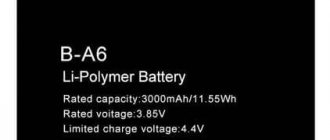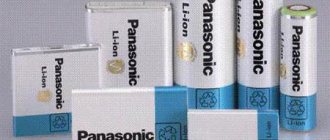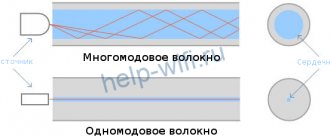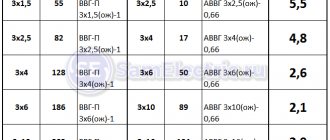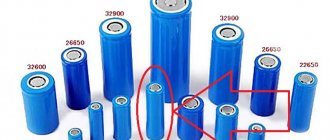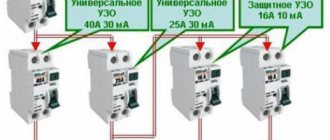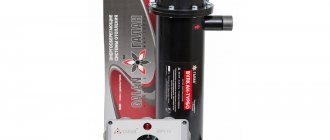The lithium polymer battery is a rechargeable battery that first gained popularity due to its introduction in the early 1990s by major electronics companies. They are essentially a group of very rigid power generation compartments consisting of three parts: a positive electrode; negative electrode; and an electrolyte, or liquid chemical compound between them. Most lithium-ion batteries, unlike more traditional ones, also have an electronic controller that regulates power and discharge flows to keep your battery from overheating and exploding.
Lithium polymer battery - description, origin of technology
Those who studied polymers wondered: “Li-Pol battery - what is it?” The most significant difference between lithium-ion and lithium polymer batteries is the electrolyte chemistry between their positive and negative electrodes. Li-Po batteries are not filled with liquid. Instead, Li-Po technology uses one of three forms: a dry solid, which was largely phased out during the prototype years of lithium polymer batteries; porous chemical compound; or gelled electrolyte. The most popular among them is the latter type of battery, which you will find in new laptops and electric cars. The catch is that many companies don't actually sell you a true Li-Poly battery, but instead a Li-ion polymer battery or Li-ion in a more flexible package.
Principle of operation
According to the principle of operation, Li-Po and Li-ion batteries are identical. The charge is carried by lithium ions, which move from the cathode to the anode and back, introducing themselves into the molecular structure of the materials. When charging batteries, Li+ ions move from the cathode to the anode, and when discharging, in the opposite direction. The conducting medium for Li+ ions is a polymer with lithium salt additives included in its composition. The voltage of Li-Po cells in a discharged state ranges from 2.7 to 3 V, and in a charged state it reaches 4.2 V.
Characteristics of Li-pol batteries
We will analyze such parameters as charging, the correct selection criteria, pros and cons, and the service life of the lithium-polymer battery.
Capacity
High energy density. As the property says, high energy density means high power without being big and bulky. This is the reason why it still exists in the world of progress as laptops and smartphones require it. Since devices are now being developed that can be smaller, but require and operate at high power and provide higher quality, the lithium-ion battery is ideal for this. This gives the battery high power while maintaining a relatively small size. Compact size makes Li-Polymer battery a good choice in the mobile industry.
Operating voltage
The first and main factor is low self-discharge. The performance of rechargeable batteries is determined by their self-discharge rate. Once disconnected from the power source, lithium-ion batteries have a very low self-discharge rate compared to other rechargeable cells such as Ni-Cad and NiMH. It's basically 5% for the first 4 hours, then drops to 1 or 2% per month. Li-ion batteries have a higher charge-discharge cycle, with some mid-range ones having 1000 cycles, which have 5000 cycles before losing 20 to 30% of their maximum charging capacity.
Working temperature
It is important to distinguish the operating temperature from the one at which the battery can simply be charged. The difference reaches 30-40 degrees. The optimal operating temperature is 60 degrees, charging - up to 90.
Number of charge-discharge cycles
Lithium-ion batteries have a longer lifespan and continue to provide better performance over a longer period of time. Since the charge-discharge cycles of Li-ion batteries are high, they are able to show better performance after 5000 cycles, while some other batteries lose 30% of their capacity after 1000 cycles. These batteries can be charged regularly without affecting their power. The main difference between a lithium-polymer battery and an ion battery is its longevity.
Types of Li-Po batteries
Depending on the permissible discharge currents, Li-Po batteries are divided into 2 groups:
- Conventional - with discharge currents up to 3–5C. Such devices are used in smartphones, tablets, other types of electronics and household appliances.
- Fast-discharge or power (designation Hi discharge, HC or HD in the marking) - devices with a permissible discharge current of up to 8–10C. They are used in radio-controlled models, portable power tools, electric vehicles and other devices that require high discharge currents.
The difference between Li-pol and Li-ion batteries
Both lithium-ion and lithium-polymer batteries have their pros and cons. In general, the advantages of lithium-ion batteries are their high power density, the absence of the so-called memory effect (when batteries become more difficult to charge over time), and their significantly lower cost than lithium-polymer. According to Wired, “Lithium-ion batteries are incredibly efficient. They pack an incredible amount of energy into a tiny package." The battery comparison will be discussed in more detail below.
But as some may have noticed with the recent story of a certain brand of cell phone being grounded, lithium-ion batteries are inherently unstable, suffer from aging, and are potentially dangerous. If the barrier separating the positive and negative electrodes is ever breached, the chemical reaction can cause combustion (fire).
As lithium-ion batteries become more popular in consumer electronics, businesses are trying to reduce costs, which explains the differences. Although quality batteries are completely safe, you should always be careful when purchasing no-name brands. Even batteries with the same performance will differ.
On the other hand, lithium polymer batteries tend to be durable and flexible, especially when it comes to the size and shape of their design. They are also lightweight, have an extremely low profile, and are less likely to suffer from electrolyte leaks. But lithium-polymer batteries aren't perfect either: they're significantly more expensive to produce, and they don't have the same energy density (the amount of energy that can be stored) or lifespan of lithium-ion.
Operating rules
To extend the life of a Li-Poly battery, you must strictly follow the recommendations for its use. First of all, you need to use a reliable charger with suitable parameters. On a universal charger, it is important to set the settings correctly - voltage 4.2 V per element and current up to 1C. For power models, a charging current of up to 5C is allowed. Also, to maintain the functionality of the Li-Po battery, it is important:
- avoid overcharging - above 4.2 V per cell;
- avoid short circuit;
- do not allow overheating above 60 °C, including when charging or discharging with high currents;
- do not leave batteries exposed to direct sunlight, near heating devices or open fire sources;
- do not break the tightness of the shell;
- Do not discharge below 3V per cell;
- do not expose to impacts, punctures or other mechanical influences;
- do not store in a discharged state;
- charge without waiting for complete discharge;
- after use in the cold - keep for a couple of hours at room temperature and then charge;
- Store in a semi-charged state in a cool, dry place, away from heat sources.
If operating rules are violated, batteries quickly lose capacity. When overheated to 70 °C, a spontaneous reaction occurs that converts energy into heat. As a result, the battery may catch fire. But if you follow the rules for using Lo-Po elements, they are absolutely safe, effectively cope with their tasks and delight you with a long service life.
Cost price
Lithium-ion batteries are expensive to manufacture, which literally increases their cost. Production is 35% more expensive than nickel-cadmium elements. As demand increases, the cost to consumers increases, which seems to be the main problem. This battery requires complex on-board computer circuitry to control and ensure that the voltage and current are within safe limits. This circuit is also the reason that makes it more expensive than other batteries.
Areas of application of lithium polymer batteries
The areas of application of lithium polymer batteries arise from the tasks that were posed during their development. This increases the operating time of the device and reduces its weight. Standard Li─Pol models work in various electronics with low current consumption. These are laptops, smartphones, e-readers, tablets.
Models that provide fast discharge are also called “power”. They are used in devices where high current consumption is required. The most well-known area of application for “power” batteries is radio-controlled models. This market is the most attractive for manufacturers of polymer batteries. In the field of operation of devices with very high discharge currents (up to 50 C), lithium polymer batteries are inferior to alkaline ones. Perhaps in the future lithium models will overcome this limitation. In terms of price, they are approximately the same as nickel-metal hydride.
Minuses
- Aging. The main disadvantage of a lithium-ion battery is its aging, and this depends on the number of charge-discharge cycles that the battery has gone through. This battery naturally degrades as soon as it is purchased, whether consumers use it or not. As lithium-ion technology grows and develops, but replacing the battery is mandatory after a certain period of time. This makes it a big problem if the battery is built into the equipment.
- Transport. There are restrictions on the weight of lithium-ion batteries during transportation. Many airlines have a limit on the number of lithium-ion batteries carried in checked baggage, security provisions may change from time to time. Any lithium-ion batteries transported separately must be protected against short circuits by protective covers, etc.
Improper use of the equipment may cause overheating, which in turn may cause an internal short circuit and ignite the flammable electrolyte, resulting in explosions and fires. This increases the risk of internal injury and damage to users and industries as most products are portable and also used in larger factories.
Short circuit without protection and monitoring circuit
What if you short-circuit the battery without a protection and control circuit? To do this, remove this board and short-circuit the battery terminals. A few seconds later we see that it is swelling and tearing.
Keep in mind that compound batteries do not have built-in protection and monitoring circuitry, as they are primarily intended for power applications.
Therefore, you need to be as careful as possible with them, do not short-circuit the terminals and do not overload the current if you are going to use them in your developments. They come with a special smart charger that turns off the charge when the battery is fully charged.
or a special module for charging such batteries
You can view it at this link.
The material for the article was prepared from the video
Features of operation of lithium polymer batteries
Lithium-ion battery is the preferred and most advanced battery to use in the current situation as it has been around for many years. This can be a disadvantage since technology changes and develops quickly, which can be a challenge for the battery to live up to expectations. As we know, some incidents still question its feasibility and effectiveness, for example, Samsung Note 7 had problems along with security issues.
The main disadvantage of lithium-ion batteries is overheating and susceptibility to fire. There have been many cases of explosions during overheating or overcharging due to the accumulation of gases and increased internal pressure as a result of electrolyte decomposition.
Every year the technology is being improved and improved, which means it will soon be on par with lithium-ion batteries and other analogues.
Device
Battery device.
Li-Ion batteries use a liquid organic electrolyte, while Li-Pol uses a polymer electrolyte, which makes it possible to increase the safety of the cell. This is significant for lithium power supplies, because safety is what has held back their development. In addition, with polymer electrolyte it became possible to choose the shape of the battery.
The design of polymer batteries is based on a process in which a number of polymers transform into a semiconductor state when electrolyte ions are introduced into them. This allowed the conductivity to increase significantly. Based on theory, the energy density of Li-Pol batteries can be increased several times compared to Li-Ion. Depending on the composition of the electrolyte, a lithium polymer battery can be:
- with electrolyte in the form of a gel. To do this, lithium salts are added to the polymer structure;
- with dry electrolyte. The basis is polyethylene oxide with the addition of various lithium salts;
- with a microporous polymer matrix.
The ionic conductivity of a polymer electrolyte is less than that of a liquid electrolyte. And it drops noticeably at sub-zero temperatures. One of the tasks in developing batteries is selecting the composition of the electrolyte so that it has high conductivity. Another goal is to expand the operating temperature range. Li-Pol batteries currently produced are not inferior to ionic batteries in terms of performance parameters.
There are battery models whose container is made of metallized polymer. But, the polymer electrolyte crystallizes, which leads to a decrease in operating parameters at sub-zero temperatures.
Current developments are polymer elements with a metal anode. Scientists were able to provide high current density and expand the range of operating temperatures. Such batteries are now successfully used in portable devices, be it a smartphone or other device.
There are many manufacturers of power supplies, and their products differ in the material of the electrodes, the composition of the electrolyte and the principle of assembly. Accordingly, there is a difference in the characteristics of the batteries. But all companies agree on one thing: Li-Pol batteries are more stable, which provides a homogeneous polymer electrolyte.
The Li-Pol battery design includes two electrodes - a cathode and an anode. The cathode is aluminum foil coated with lithium (for example, lithium cobalt), and the anode is made of copper, coated with graphite. Between the electrodes there is a polymer ion-conducting film. At that time, in Li-Ion varieties, instead of a film, a porous separator impregnated with a working solution is used.
The electrodes, polymer separator and gel are placed in a foil body or neutral polymer film. This increases the ratio of energy intensity to size, and the batteries themselves are much more compact and safer than ion ones. There are batteries whose thickness is only 1 mm.
DIY battery assembly
To assemble the battery yourself, you need to buy batteries, or in common parlance - banks. To assemble, you need to be able to solder and understand basic electronics concepts.
To assemble the battery, all purchased banks must be connected in parallel. In order to determine the number of cans in a purchased battery, you need to look at the label. Not only the number of cans is written on it, but also the number of cans connected in series and in parallel.
Typically, the letter P indicates the number of cans connected in parallel, and the letter S indicates those connected in series. For example, the packaging says 3S2P. It is deciphered like this: under the case there are 3 rows of batteries connected in series, each row has 2 banks.
To calculate the capacity of this battery, assume that 1 bank has 1500 mAh, then the total capacity is 3000 mAh, since the capacity increases with a parallel connection.
If you are using batteries that you purchased separately, then before connecting them to each other, you should equalize the potentials on the marks.
If this is not done, the banks will begin to charge each other, which will result in a current greater than 1C.
Also, before connecting, it is necessary to discharge all banks so that the voltage is 3V, with a current of 0.1-0.2C. Especially all of the above concerns parallel connections. The voltage is measured with a digital voltmeter, otherwise inaccuracies may occur.
Many manufacturers do not balance banks to speed up and save on battery production, so it is best to do the balancing yourself.
To avoid unbalancing the battery in the future, under no circumstances should you add new elements to the battery in succession with old ones.
The use of cans with different capacities can lead to imbalance, even if the difference between the values is small. For example, 1800 mAh and 2000 mAh. Different manufacturers have batteries with different voltages, and this leads to imbalance.
When all the batteries have been purchased, you can start soldering the cells. Of course, you can come up with a layout of the elements on your own, but it’s best to take a ready-made one.
In order not to overheat the outputs and the seal of the can, we solder carefully, otherwise the battery will fail without even working.
You can purchase a special textolite printed circuit board on which it will be more convenient to solder the wires. It is soldered to each can. This adds a little weight to the jar (about 1 gram), but soldering becomes much more convenient, since fiberglass does not conduct heat well and can be heated for longer.
For balancing, a special board is used, which contains load resistors, a control circuit, and an LED that will light up if the voltage is above 4.2V.
If the voltage exceeds this value, the board closes part of the current, which prevents it from increasing further. Such a board must be soldered to each can.
↑Features of battery charging
The lithium polymer battery will require at least three hours of charging to recharge. In this case, the block does not heat up. There are two stages of filling. The first occurs until peak mode is established, which is maintained until charging reaches 70%. Under normal voltage conditions, a residual charge of 30% is accumulated. Recharging must be performed according to a strict schedule, waiting for complete discharge and carrying out the procedure every 500 hours of use of the device. This mode maintains a constant filling volume.
The battery must only be connected to a stable power supply, without voltage surges or interference. Only use appropriate chargers that match the characteristics stated in the description. An important point: during the charging process, all connectors must be connected correctly; disconnection must not be allowed. Li-Pol elements are extremely sensitive to all kinds of overloads, excessive current levels, mechanical shock and hypothermia. The tightness of solid elements should be ensured.
Li-ion cells charge using much the same principles as polymer cells, but are more sensitive and less reliable in terms of safety. The charging time for both types is approximately the same, but the polymer element is more capricious in terms of the quality of the power supply point.
↑Additional protection
If we consider the question of what is the difference between Li-ion and Li-Pol batteries, it is worth paying attention to the built-in protective systems. Lithium polymer models require additional internal protection features. They are characterized by cases of burnout due to overheating of the elements. Such consequences are caused by the internal stress of various work areas.
In order to protect the device from unauthorized overcharging, overheating of parts and burnout, the design uses a special stabilizing system and a current limiting mechanism. This increases the safety of lithium-polymer models, but significantly increases the cost of the battery due to the use of protective elements.
Part of the design involves electrolytic components in the gel formation. Composite batteries are used in many portable devices. They are extremely sensitive to temperature changes and require strict adherence to operating rules. The polymer-based battery can be used in devices with heating in the range of 60-100 degrees.
Manufacturers enclose the internal part in a housing with heat-insulating properties - it is convenient to use such batteries in hot climates. In conditions where the temperature regime does not meet operating requirements, elements with a polymer component are used as backup.
